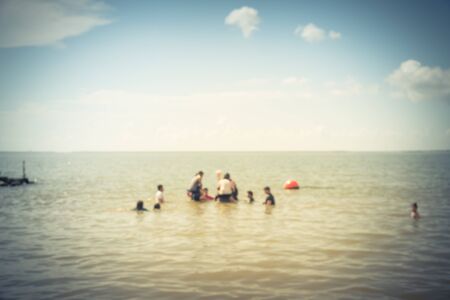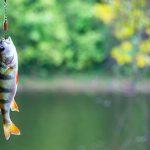1. Fish-Finder Rig
If youre surf fishing along the East Coast or Gulf shores, the Fish-Finder Rig is a must-have in your tackle box. This rig is especially ideal for targeting big game predators like striped bass, red drum, and bluefish. Its design helps you present live or cut bait naturally in rough surf conditions—where these large fish often feed.
How It Works
The Fish-Finder Rig features a sliding sinker setup that allows the fish to take the bait and swim off without immediately feeling resistance. This increases your chances of a successful hookset because the fish won’t get spooked as easily.
Main Components
| Component | Description |
|---|---|
| Sinker Slide | A plastic sleeve with a clip that holds your weight and slides freely on the mainline |
| Barrel Swivel | Prevents line twist and connects your mainline to your leader |
| Leader Line | Usually 12-24 inches long, made of heavy mono or fluorocarbon |
| Hook | Circular or J-hook depending on target species and bait type |
Best Conditions to Use
- Surf Conditions: Moderate to heavy surf where natural bait presentation is key
- Tide: Incoming or outgoing tides when predatory fish are actively feeding
- Bait: Live eels, bunker chunks, mullet, shrimp, or crab
Pro Tip:
Use a pyramid sinker in heavier surf to keep your bait in place. Match your leader strength and hook size to the species youre targeting—go heavier for red drum and lighter for smaller stripers.
2. High-Low Rig
The High-Low Rig, also known as the double drop rig, is a classic surf fishing setup that’s super popular among anglers targeting multiple species from the beach. It’s called “high-low” because it features two hooks set at different heights along the leader line—one higher and one lower—giving you more coverage in the water column.
Why Use a High-Low Rig?
This rig shines when youre fishing in areas with a variety of species cruising at different depths. With two hooks in play, you double your chances of landing something tasty. Its especially handy when bite detection is important or when fish are being finicky. The dual-hook setup helps identify which bait presentation is getting more attention so you can adjust accordingly.
Perfect For:
- Targeting small to medium-sized surf fish like pompano, croaker, spot, and whiting
- Fishing from piers, jetties, or sandy beaches
- Situations where fish might be holding at different depths
- Using natural baits like shrimp, squid, or sand fleas
High-Low Rig Setup
| Component | Description |
|---|---|
| Main Line | 15–30 lb mono or braid |
| Leader Line | 20–40 lb monofilament or fluorocarbon |
| Hooks | Size 2 to 1/0 circle or J-hooks (depending on target species) |
| Sinker | Pyramid sinker (2–4 oz) attached via dropper loop at the bottom |
| Swivel | Barrel swivel connecting main line to leader to reduce line twist |
Tips for Success
- Use smaller hooks and lighter gear if targeting panfish like spot or croaker.
- Bait each hook with something different to see what fish are biting on.
- If waves are rough, use a heavier pyramid sinker to keep your rig anchored.
- Add small floats near the upper hook if you want to suspend bait off the bottom.
The High-Low Rig is all about versatility and maximizing your chances with every cast. Whether youre a beginner learning the ropes or an experienced angler chasing variety, this setup deserves a spot in your surf fishing arsenal.

3. Carolina Rig
The Carolina rig is a classic setup that surf anglers love for its simplicity and effectiveness. Its especially useful when youre fishing in calm surf or along inshore edges where a subtle presentation can make all the difference.
Why Use a Carolina Rig?
This rig is designed to keep your bait close to the bottom, which is perfect when targeting species that feed near or on the seabed. The sliding sinker allows your bait to move naturally with the current, while still maintaining contact with the bottom — making it a go-to choice for soft-bottomed areas.
Best Conditions for the Carolina Rig
- Calm surf
- Inshore ledges and channels
- Sandy or muddy bottoms
- When fish are finicky and require a natural bait presentation
Target Species
| Fish Species | Why It Works |
|---|---|
| Flounder | Lies flat on the seabed, waiting for bait to come close |
| Whiting | Feeds near sandy bottoms, attracted to slow-moving baits |
| Sea Trout | Often patrols inshore areas and shallow troughs near shorelines |
How to Set It Up
- Slide an egg sinker onto your main line.
- Add a bead below the sinker to protect your knot.
- Tie a swivel below the bead.
- Attach a leader (18–36 inches) and finish with a circle or kahle hook.
Pro Tip:
Use live bait like shrimp or finger mullet for best results. Let the rig sit still and allow the scent and movement of the bait to attract fish naturally.
The Carolina rig shines when subtlety is key. Its not about flashy movement — its about keeping things natural and letting your bait do the work.
4. Dropper Loop Rig
The Dropper Loop Rig is a favorite among surf anglers who need a strong and tangle-resistant setup, especially when fishing near rocky bottoms or structure-heavy areas. This rig keeps your bait off the seafloor, helping to avoid snags while still presenting your bait in the strike zone for bottom-feeding species.
When to Use a Dropper Loop Rig
This rig shines when youre targeting fish that hang close to the bottom but aren’t necessarily feeding right on the sand. It’s ideal for deep water surf fishing situations where the ocean floor has rocks, reefs, or other obstructions. Anglers often use it during strong currents because it keeps the bait stable and visible.
Best Target Species
| Fish Species | Why It Works |
|---|---|
| Black Drum | The suspended bait reduces snagging and appeals to their bottom-feeding habits. |
| Snapper | Perfect for keeping bait near structure where snapper like to hide. |
| Sheepshead | The elevated bait presentation makes it easier to attract these picky eaters. |
How It’s Tied
The rig features one or more loops tied into the main line using dropper loop knots. A hook is attached to each loop, and a weight is tied at the end of the main line to hold everything down. This setup allows multiple baits to be used at different heights off the bottom without tangling.
Pro Tip:
Use fluorocarbon leader material if fishing in clear water—this makes your rig less visible and increases bites.
5. Pulley Rig
The Pulley Rig is a favorite among surf anglers who target big game fish from the beach. Its especially useful when fishing in rough surf conditions or areas with snaggy bottoms, such as rocky shores or piers. The design of this rig helps minimize break-offs by lifting the sinker off the bottom during retrieval, which reduces the chances of getting stuck.
Why Use a Pulley Rig?
The key advantage of the Pulley Rig is its ability to handle heavy-duty situations. If youre going after large species like sharks, rays, or big drum, this rig gives you the strength and reliability needed. When a fish takes the bait, the pulley system allows the weight to slide up, keeping tension on the hook and reducing pressure on weak points of your line.
Best Conditions for Using a Pulley Rig
This rig shines in specific environments where many other rigs might fail. Heres a quick breakdown:
| Condition | Why Pulley Rig Works |
|---|---|
| Heavy Surf | The streamlined design prevents tangling and holds bait steady in strong currents. |
| Snaggy Bottoms | The pulley action lifts the sinker off the bottom during retrieve, reducing snags. |
| Targeting Big Fish | Built to withstand powerful runs and heavy fights from species like rays and sharks. |
Tackle Tips
- Main Line: 40–80 lb braided or mono line for abrasion resistance.
- Sinker: 4–6 oz grip leads work well to hold bottom in heavy current.
- Hook Size: 5/0 to 10/0 circle hooks depending on target species.
Pro Tip:
If youre fishing a beach known for rocks and structure, pre-tie several pulley rigs at home. That way, you can quickly swap them out if one gets damaged or lost.
6. Float Rig
The float rig is a great choice for surf anglers looking to keep their bait off the bottom and in plain sight of surface-feeding predators. Its especially useful when youre fishing near structures like piers or jetties, where fish such as Spanish mackerel and bluefish often gather to feed.
When to Use a Float Rig
This setup is ideal when:
- Youre targeting topwater or mid-column feeders like Spanish mackerel, bluefish, or ladyfish.
- You want to avoid snagging your bait on rocks, seaweed, or debris commonly found near shorelines.
- You’re fishing around man-made structures like piers or jetties where fish patrol just below the surface.
How It Works
The float rig uses a buoyant float to suspend your bait at a specific depth. This keeps it above weed beds and underwater obstacles while making it more visible to passing fish. The constant motion of the waves adds natural movement to the bait, attracting more bites.
Basic Components of a Float Rig
| Component | Description |
|---|---|
| Float/Bobber | Keeps the bait suspended and provides visual bite detection. |
| Leader Line | Connects the hook to your main line; fluorocarbon is preferred for its invisibility underwater. |
| Hook | Size depends on target species; circle hooks are popular for catch-and-release. |
| Split Shot or Egg Sinker (optional) | Adds weight if needed to control depth or casting distance. |
Best Baits to Use
- Live shrimp
- Cut bait (like mullet or squid)
- Small live baitfish (like finger mullet)
Pro Tips
- Adjust the depth based on water clarity and target species behavior.
- Use brightly colored floats in rough surf so you can spot them easily.
- If fishing near structure, be ready for fast strikes—these fish are aggressive!


